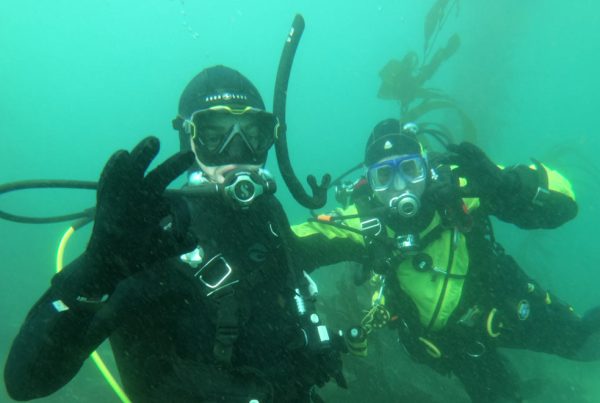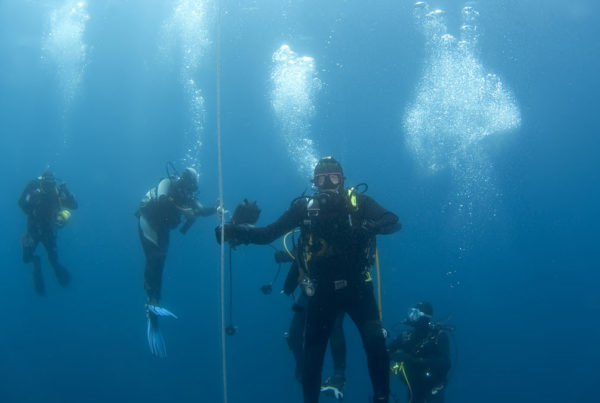Underwater navigation is one of the most underappreciated of all diving skills. During open water classes, students are taught basic compass skills. Later, these skills are enhanced in advanced and specialty classes where students are taught to estimate distances and navigate a geometric pattern. While proficiency with a compass can be quite handy while navigating under a thick bed of kelp, compass skills are not the only navigation tool needed by divers.
The fact is most of us dive because it is fun and we do not want to spend an entire dive staring at our compasses. Diving should be about enjoying California’s marine life, getting that great photo, catching dinner, or simply exploring. With a little awareness of the dive site and a modest attention to gauges, it is possible have a fun dive, while beginning and ending your dive at the anchor and without repeatedly popping to the surface to locate your boat.
Before beginning a dive you should set the bezel of your compass to point you from the stern to the bow (towards the pointy end) of the boat. In the absence of site knowledge or divemaster suggestions, most divers begin their dive by heading out from the bow, since the bow normally points into a current, and the most interesting dive is normally forward of the boat. After your initial descent down the anchor line, it is advisable to recheck your compass and make a mental note how your heading directs you relative to bottom topography and landmarks.
Many, if not most, California dive sites are near the mainland, an island, or rock; and the bottom generally slopes from shallower to deeper water. Make a mental note (or use a slate) of the depth of the anchor and near by landmarks—a large rock, pinnacle or uniquely shaped marine life, such as a sea fan, etc. Proceed on your dive while keeping the shallower area off one shoulder and swim along the depth that you and your buddy have agreed to.
While you are enjoying your dive, regularly check air pressure and compass heading as a reality check. Begin your return to the boat according to your plan, and retrace your path at a shallower contour while keeping your other shoulder towards the shallow area. If you plan on spending the last part of your return leg at or near the depth of your anchor, you will easily locate your boat and can use the anchor line for your accent and safety stop. When you need to return to anchor depth, it is dependent on the conditions and your experience and confidence. If you are a new diver, or there is a stiff current running you will want to come to your anchor depth shortly after you begin to head back to the boat. An experienced diver, particularly one who is familiar with the site, can head to the anchor depth later on the return leg.
You can modify this concept to fit most divesites. For instance, you can swim completely around a rock or pinnacle, while easily using your depth gauge and compass to precisely locate your anchor from its depth and relative position to the rock. Navigating along a rock wall is particularly easy—simply swim along a deeper contour of the wall, and return on a shallower contour. Or, if the bottom is so flat that you cannot discern a slope, you can make use of ledges so common in Southern California. Find a ledge near your anchor, and then swim to another ledge running parallel to it. Halfway through your dive, jump back to the first ledge and follow it back to the anchor. Should you find yourself on a flat bottom with few landmarks, well, you will just have to use those compass skills.
It is easer to find your boat if you don’t swim very far. In most cases, boat captains anchor on the best part of the reef and the best diving is under or at least near the boat. Also, listen for the sound of a generator, normally a good clue that you are getting close to your boat.
Unless you venture quite far from your boat, or the terrain is flat and without prominent features, it is not that difficult to begin and end your dive at the anchor line without a lot of fuss. Practical underwater navigation is mostly about being aware of the underwater terrain and using it to your advantage.










